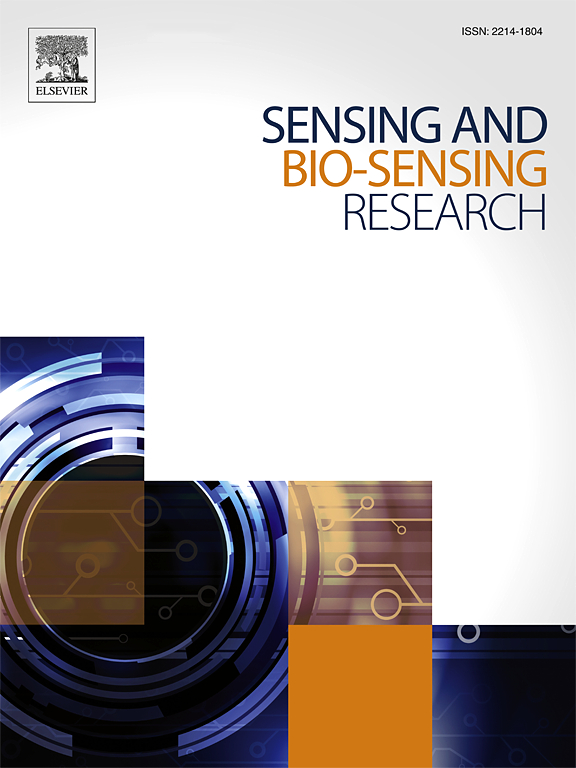CRISPR-Cas12a based detection of EGFR gene mutation in cell free DNA for early diagnosis of Non-Small Cell Lung Cancer (NSCLC)
IF 5.4
Q1 CHEMISTRY, ANALYTICAL
引用次数: 0
Abstract
Detecting EGFR mutations in circulating cell-free DNA (cfDNA) is essential for personalizing treatment and real-time monitoring of non-small cell lung cancer (NSCLC), especially when tissue biopsies are not an option. Conventional methods for identifying these mutations in cfDNA are limited and often require extensive laboratory set-up. The CRISPR-Cas system, notably the Cas12a variant used in the DETECTR method, presents a groundbreaking approach for highly sensitive and specific mutation detection in biological fluids, significantly advancing diagnostic capabilities. In this study, we present a novel, rapid, and precise method combining Recombinase Polymerase Amplification (RPA) for DNA amplification with a CRISPR-Cas12a fluorescence assay to detect EGFR mutations. This technique achieves attomole-level sensitivity without cross-reactivity, functions near 37°C, and delivers results within an hour, making it highly suitable for clinical applications in precision oncology. To further enhance its utility for point-of-care diagnostics, we integrated Cas12a with lateral flow-based detection, achieving single-copy detection sensitivity. In a clinical trial involving 57 NSCLC patient samples, this method successfully identified EGFR mutations, with results consistent with those obtained via PCR. The CRISPR-Cas12a based lateral flow assay demonstrated exceptional sensitivity and specificity, even detecting dual mutations simultaneously on a single test strip. These results position the CRISPR-Cas12a detection system as a straightforward, highly sensitive alternative to PCR, with significant potential for point-of-care applications in detecting cfDNA mutations.
求助全文
约1分钟内获得全文
求助全文
来源期刊

Sensing and Bio-Sensing Research
Engineering-Electrical and Electronic Engineering
CiteScore
10.70
自引率
3.80%
发文量
68
审稿时长
87 days
期刊介绍:
Sensing and Bio-Sensing Research is an open access journal dedicated to the research, design, development, and application of bio-sensing and sensing technologies. The editors will accept research papers, reviews, field trials, and validation studies that are of significant relevance. These submissions should describe new concepts, enhance understanding of the field, or offer insights into the practical application, manufacturing, and commercialization of bio-sensing and sensing technologies.
The journal covers a wide range of topics, including sensing principles and mechanisms, new materials development for transducers and recognition components, fabrication technology, and various types of sensors such as optical, electrochemical, mass-sensitive, gas, biosensors, and more. It also includes environmental, process control, and biomedical applications, signal processing, chemometrics, optoelectronic, mechanical, thermal, and magnetic sensors, as well as interface electronics. Additionally, it covers sensor systems and applications, µTAS (Micro Total Analysis Systems), development of solid-state devices for transducing physical signals, and analytical devices incorporating biological materials.
 求助内容:
求助内容: 应助结果提醒方式:
应助结果提醒方式:


